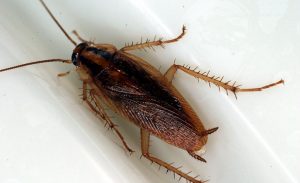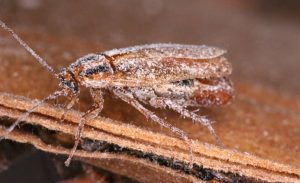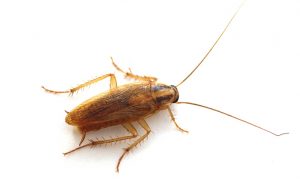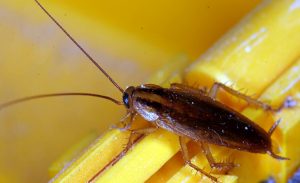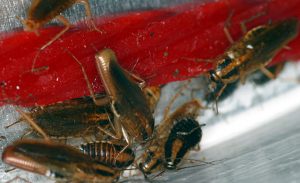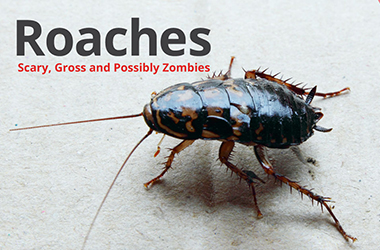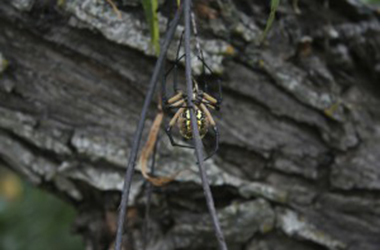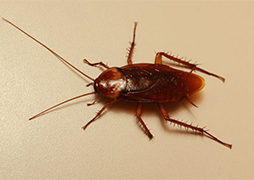
German Cockroach Facts
- Color: Tan to light honey brownish
How to Identify German Cockroaches
One of the most common species of roaches, the German cockroach is also one of the smaller species of roaches. A distinguishing characteristic of the German cockroach is the two dark horizontal stripes behind its head on its back (separated by a lighter stripe), which run lengthwise on the body. The German adult males and females have fully grown wings and can fly short distances, although they rarely do.
German Cockroach Behavior
German cockroaches are typically found in homes, apartments, restaurants, and other buildings where food is stored, prepared, or served. German cockroaches eat all kinds of food and may hitchhike into the home in search of food and moisture. This species avoids lights and prefers to live near moisture sources and in humid areas given their general aversion to the cold. German cockroaches can proliferate quickly and usually nest around the kitchen and bathroom near food and moisture.
German cockroaches prefer to live in cracks and crevices near food sources and spend an overwhelming majority of their time in these harborages. German cockroaches prefer to live close to sources of food and water, hence their affinity for kitchens. German cockroaches have a high need for moisture and usually travel only 3 to 3 meters from their harborage for food and water (in kitchens, bathrooms, utility rooms, etc.), preferring darkness. Without food or water, adults may die in two weeks, but can live for a month with only water.
Hazards – Food Poisoning
This insect accumulates and ingests bacteria and other pathogenic agents in order to get needed bacteria in its gut to digest food. As a result, this insect is a major vector of Salmonella, a bacterium that causes food poisoning, dysentery and/or diarrhea, with indirect transmission of these pathogens to mammals via contamination of surfaces, utensils and food. If one fecal pellet is dropped on a utensil or dish and then used by a human, that individual is at a high risk for developing dysentery.
Signs of Infestation
- Customer complaints about food borne illness (described above).
- Insect emits a foul odor and leaves fecal pellets wherever it travels. Odor is the result of fluids secreted by the scent glands in its abdomen, as well as fluid it regurgitates while eating. The fluid is used to mark or scent insect runways and critical fecal focal points.The fecal focal point is a central toileting area for the cockroach population. Not only do they defecate at this location, they return to consume fecal matter after each instar (molting) in order to regenerate essential bacteria in their guts.These fluids and the insect’s feces will damage and contaminate every surface the insect touches. Humans may report illness, including dizziness, nausea and a burning sensation as a result of this insect’s foul smell.
- Physical presence of insects, resulting in customer/employee complaints.
Harborage
This insect is nocturnal. During the day, insects cluster together in hiding places, like cracks and crevices behind baseboards & molding, in wall voids, and under stoves, refrigerators, dishwashers, etc. It seeks out harborage where its body is protected from above and below. If insects are visible during the day, the infestation is so large that they cannot all fit in available harborage areas.
Food
An omnivore, this insect consumes both meat and plant matter. It is dependent on man for survival, so it’s commonly found in settings where food and organic debris are readily available.
Control Measures
Inspection
Infestations can occur in any location, not just at floor level. Technician is constantly scanning in a prescribed pattern for conditions conducive, harborages and obvious signs of infestation. He uses an inspection mirror and flashlight to look underneath and behind surfaces.
Mechanical nest removal
Use a hepa vac to remove nesting pockets.
Material Application
A boron based product is applied lightly in cracks and crevices for long-term cockroach control. Works well in dirty environments as it combines with the environmental contaminants that are a natural roach food, thereby creating a toxic food source.
Exclusion
Caulk cracks & crevices used for harborage, such as those around the sink, stove, etc.
Sanitation
Plays a major role in cockroach control. Inspector and technician will routinely document and address sanitation issues via a sanitation report in order to communicate with the customer.
- Roach Health Concerns
- Roach Infestations
- How to Get Rid of Roaches
Roaches Photos
4 Seasons Pest Control

Satisfaction Guarantee
What it includes*
-
Ants
-
Crickets
-
Fleas
-
Mice
-
All Roaches
-
Scorpions
-
Spiders
-
Ticks
-
Wasps
-
Other*

